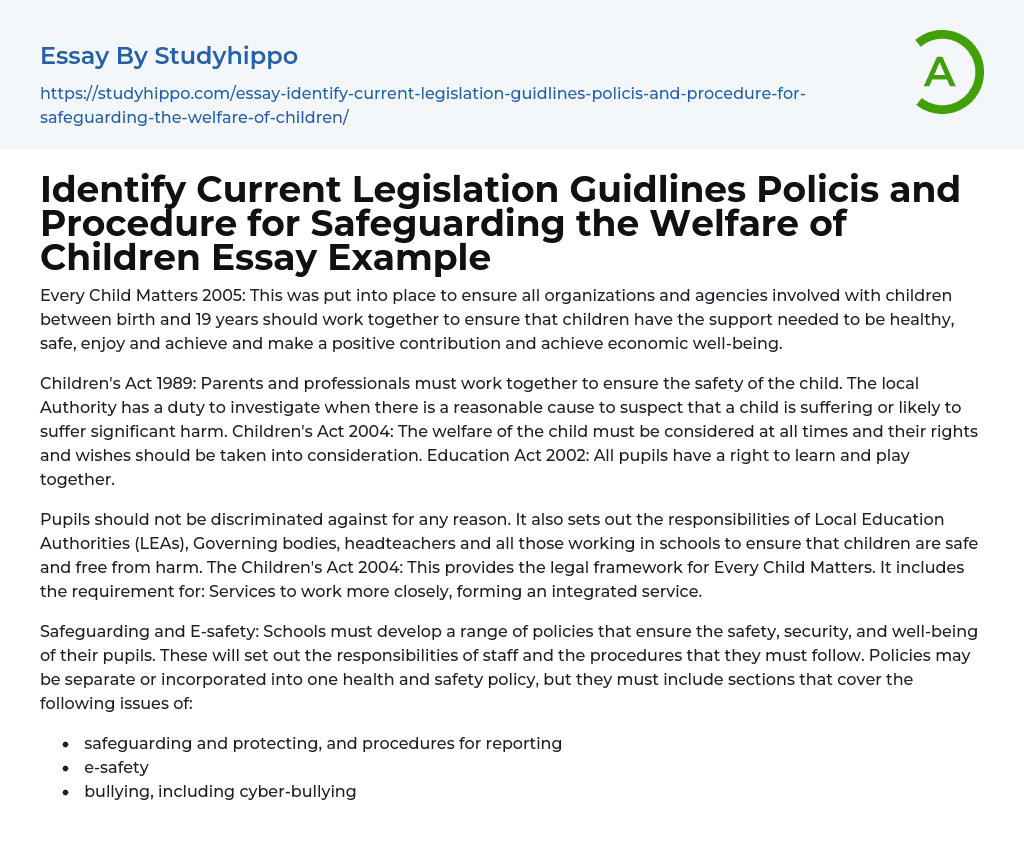

Every Child Matters 2005 and Children’s Act 1989: Supporting Children’s Well-Being
The text highlights that according to Every Child Matters 2005, there is a requirement for all organizations and agencies responsible for children aged from birth to 19 years to work together. The aim of this collaboration is to ensure that children receive the essential support in areas such as health, safety, enjoyment, achievement, positive contribution, and economic well-being.
The collaboration between parents and professionals is crucial for safeguarding children, as mentioned in the Children's Act 1989. When there is a reasonable suspicion of significant harm, the local authority must conduct an investigation. The Children's Act 2004 highlights prioritizing the child's well-being while also considering their rights and preferences. Additionally, the Education Act 2002 guarantees that all students have the right to learn and interact with others.
Ensuring the well-being and safety of pupils is crucial, and it is unacceptable
...to discriminate against them. The Children's Act 2004 establishes the legal framework for Every Child Matters, specifying the responsibilities of Local Education Authorities (LEAs), governing bodies, headteachers, and all school staff. This act also emphasizes the significance of collaborative efforts among services to establish an integrated service.
To guarantee the welfare, safety, and online security of students, schools must implement policies that outline the responsibilities of staff members and detail the required procedures. These policies can exist independently or be included within a broader health and safety policy. Regardless of their structure, these policies need to address specific areas:
- safeguarding and protecting, and procedures for reporting
- e-safety
- bullying, including cyber-bullying
- Child essays
- Childcare essays
- Child labor essays
- Doll essays
- Euthanasia essays
- Assisted Suicide essays
- Censorship essays
- Gun Control essays
- Empowerment essays
- Civil Rights essays
- Capital Punishment essays
- Death Penalty essays
- Human Trafficking essays
- Sex Trafficking essays
- Gay Marriage essays
- Affirmative Action essays
- Child Labour essays
- Privacy essays
- Speech essays
- Child Protection essays
- Corporal Punishment essays
- Police Brutality essays
- Gun essays
- Death Penalty Pros And Cons essays
- Is The Death Penalty Effective essays
- The victim essays
- Public Speaking essays
- Freedom Of Speech essays
- Free Speech essays
- Persuasive Speech essays
- Gettysburg Address essays
- Informative Speech essays
- Jurisprudence essays
- Social Injustice essays
- Juvenile Justice essays
- Adoption essays
- Aunt essays
- Babies essays
- Bedroom essays
- Caring essays
- Children essays
- Daughter essays
- Divorce essays
- Dog essays
- Dysfunctional Family essays
- Family Tradition essays
- Family Values essays
- Father essays
- Foster Care essays
- Friends essays



